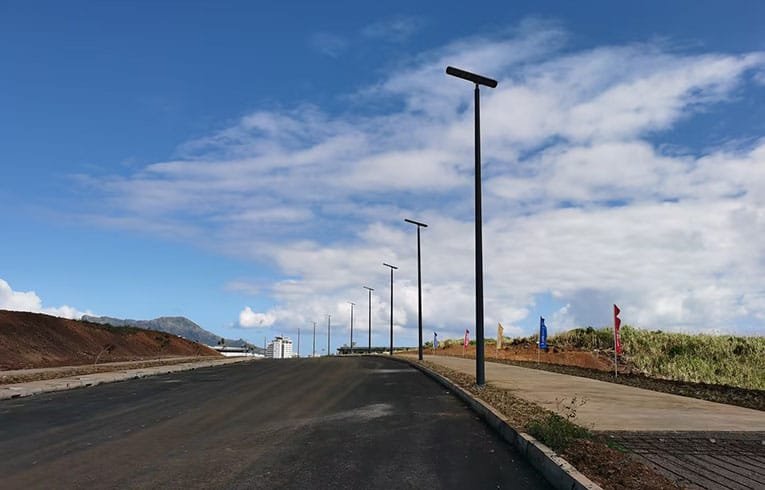Earthquakes pose a significant threat to infrastructure, especially streetlight poles. If they collapse, they can cause safety hazards and economic losses. How can we enhance their earthquake resistance to ensure road lighting safety and stability?
Enhancing the earthquake resistance of streetlight poles requires optimized design, material selection, and proper installation. This reduces damage during earthquakes, extends lifespan, and improves overall safety.
Ensuring streetlight poles have strong earthquake resistance is crucial for public safety and sustainable urban infrastructure. Let’s explore effective strategies for improvement.
What Materials Enhance Earthquake Resistance?
The choice of material directly determines the earthquake resistance of streetlight poles. Different materials have varying strengths, flexibility, and durability, impacting their performance during seismic events.
High-strength steel and aluminum alloys are ideal for improving earthquake resistance. They offer high yield strength and ductility, which help absorb seismic energy and reduce the risk of fractures.
Comparison of Common Materials
| Material Type | Earthquake Resistance | Corrosion Resistance | Cost |
|---|---|---|---|
| Carbon Steel | Medium | Low | Low |
| Stainless Steel | High | High | High |
| Aluminum Alloy | High | High | Medium |
| Composite Materials | Highest | Highest | Highest |
Why Choose Aluminum Alloys and High-Strength Steel?
- Higher Yield Strength – Withstands greater stress without breaking.
- Good Ductility – Can deform to absorb energy instead of breaking.
- Lightweight Design – Reduces the overall weight, lowering foundation stress.
Selecting the right material can effectively improve earthquake resistance while reducing maintenance costs.
How Does Structural Design Affect Earthquake Resistance?

Poorly designed poles may resonate during an earthquake, leading to structural failure. Therefore, a well-thought-out structural design is key to enhancing earthquake resistance.
Optimizing pole structures, such as using a tapered design, increasing wall thickness, and employing flexible connections, can significantly enhance earthquake resistance and reduce seismic damage.
Structural Optimization Strategies
-
Tapered or Multi-Section Design
- Strengthens the base, reducing top displacement.
- Minimizes vibration transfer, improving stability.
-
Thicker Walls and Reinforcement Ribs
- Increases localized load-bearing capacity, preventing stress concentration.
- Reduces the risk of breakage due to excessive force.
-
Use of Flexible Joints
- Allows slight movement during seismic activity, reducing direct stress.
- Prevents rigid connections from overloading the base.
By optimizing design, poles can maintain better stability during earthquakes, reducing the risk of collapse.
How Does Installation Affect Earthquake Resistance?
Even with the best materials and designs, improper installation can compromise earthquake resistance. Proper installation techniques are essential for long-term stability.
Using deep foundation anchoring, adding shock-absorbing layers, and reinforcing the ground base can improve pole stability during seismic events.
Key Installation Techniques
-
- Increases burial depth for enhanced stability.
- Essential for soft soil areas to prevent ground shifting during earthquakes.
-
Shock-Absorbing Layers
- Rubber or elastic materials absorb seismic energy.
- Reduces the rigid connection between the pole and the ground, improving shock resistance.
-
Ground Base Reinforcement
- Necessary for weak soil conditions to prevent foundation failure.
- Pile foundations or concrete reinforcements enhance earthquake resistance.
Scientific installation methods further improve pole performance, ensuring a stable public lighting system.
How Do Maintenance and Inspections Ensure Long-Term Earthquake Resistance?

Earthquake resistance is not only about design and installation but also long-term maintenance and inspections to keep poles in optimal condition.
Regularly checking for material fatigue, loose connections, and reinforcing when necessary can effectively enhance earthquake resistance and extend service life.
Maintenance Strategies
| Maintenance Task | Frequency | Purpose |
|---|---|---|
| Pole Inspection | Annually | Check for cracks or deformations |
| Connection Check | Every 6 months | Ensure bolts remain tight |
| Ground Stability Test | Every 2 years | Ensure no soil shifting or foundation cracking |
| Anti-Corrosion Treatment | Every 3 years | Prevent strength loss due to rust |
Key Maintenance Measures
- Inspect for cracks or corrosion and repair them early to prevent failures during earthquakes.
- Reinforce foundations periodically, especially in seismic-prone areas, to ensure stability.
- Replace aging bolts and connectors to prevent failures due to vibration-induced loosening.
Long-term maintenance ensures that streetlight poles retain their earthquake resistance, keeping public lighting systems safe.
Conclusion
Enhancing the earthquake resistance of streetlight poles involves material selection, structural design, proper installation, and ongoing maintenance. By optimizing each step, we can significantly reduce earthquake damage and ensure the stability and safety of road lighting systems.


